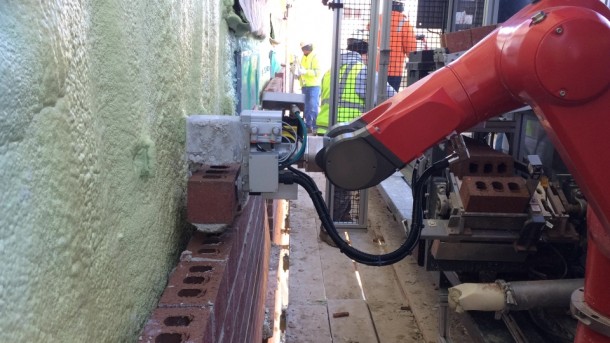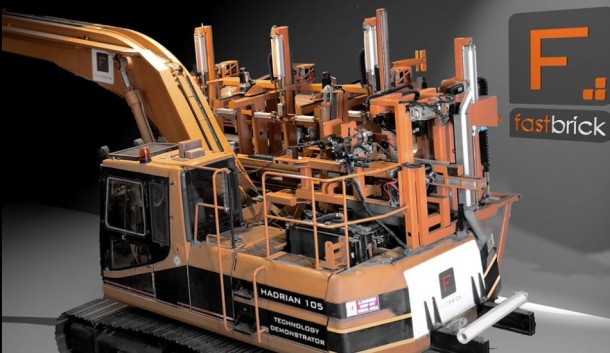Robots are taking over your job literally this time. A robot by the name of SAM (Semi-Automated Mason) is currently helping out construction workers at various sites. It is termed semi-automated because a worker is still required at to carry out more intricate tasks such as handling aesthetic details( cleaning excess cement) and setting up the work site. Whereas, the robot handles more repetitive and labor intensive tasks such as pick & place of bricks and applying mortar.
The robot requires a set of commands and measurements to be inputted first through your computer before it begins work. The main challenge for the engineers designing this was the dynamic environment of a construction site as opposed to a more fixed nature of tasks at a factory or a production facility. To know how the robot manages to overcome these obstacles and how it functions in more detail, check out the video below.
SAM is not alone in the field of construction as a robot, though, another robot by the name of Hadrian is hard at work laying bricks. A study showed that Hadrian can lay bricks more than twice the rate of most skilled masons in the world. At more than 1000 bricks per minute, the robot can erect walls of a home in just under two days, a task that requires a human crew of 6-10 members 3-5 weeks of hard labor. The fundamentals of working for this robot are a little different. This machine operates much more like a 3D printer. The manufacturer claims that Hadrian is faster than SAM, but no comparative study has been made( but we reckon by the videos that Hadrian just edges SAM in speed).Hadrian is shown in the picture below.
The advent of such robots shows that technology is indeed progressing at a very fast rate. Having said that though human body and more importantly the human brain is a complex marvel, due to which copying its functionality is very hard. While there is still a fortune invested in artificial intelligence, present results are not close enough to completely replicate human ability. For that reason, humans remain part of the workforce and will continue do so until machines can completely match our intellect and emotional ability.




